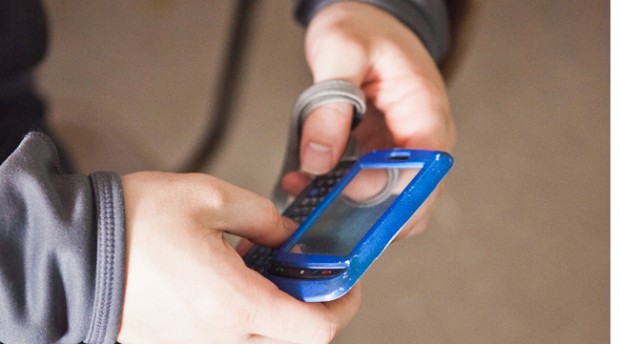"It's not about what you have, it’s about being awesome,” Duerr said. When Duerr started at St. Paul Schools three years ago, the school culture did not encourage risk taking. The technology available to teachers was limited to a few smartboards, two computer labs with shared PC desktops and a laptop cart with 10 MacBooks still in their boxes. Technology wasn’t part of the school culture and teachers hadn’t been trained on anything. Duerr started out by training them with the tools she had available and started writing grants to raise the money for more updated technology.
2. DEVELOP A SHARED VISION
Duerr worked alongside her teachers to create a shared vision of using technology to enhance classroom instruction, provide learning opportunities that wouldn’t otherwise be available to students and to deepen student-teacher relationships. “They had to have ownership of that learning and they had to share with each other,” Duerr said. “Sometimes as educators we aren’t the best sharers.”
Together the teaching staff came up with ideas about how to bring technology into the classroom and set a goal of using tech support once a week in class. They documented the use and how it improved learning. Teachers asked Duerr to hold them accountable to those goals as she visited and observed classrooms.
One teacher set the goal of using technology to engage students more meaningfully with key vocabulary. She used Educreations to have students draw and create word connections. That activity has become a weekly fixture in her classroom.
Another teacher -- prone to lecturing at the front of the room -- wanted to try and give up control. She planned one day a week for students to design the lesson themselves or gave them project work. She could have let go sooner, but technology gave her the impetus and willingness to try it out, said Duerr.
3. WRITE GRANTS
"Not everyone can be a one-to-one school, but that's not what it has to be for you to do amazing things with kids," Duerr said. She's been aiming for a one-to-three ratio and has gradually applied for grants to bring more devices and better broadband access to her school. Her fundraising has paid off. She was able to give all her teachers iPads in June and after one professional development day to learn the basics, sent them home for the summer to experiment. “I just said, 'Come back in August and be on fire with using this technology to teach,'” Duerr said. She also fundraised for two laptop carts to offer more opportunities for teachers to engage with the tactics they were excited to try.
4. TAKE ADVANTAGE OF BYOD
Between 80 and 88 percent of St. Paul Schools students receive free or reduced lunch (the range reflects different accounting for elementary and high school students). Still, a poll of students showed that three quarters of 7-12th graders had mobile phones and half of those were smartphones.
“They are connected, socio-economic barriers be darned,” Duerr said. “People are connected and we don’t need to cut off our nose to spite our face. We need to use what we have.” She’s adamant that letting students bring their own devices to school gives them a chance to have a global education that the meager resources of the school wouldn't otherwise be able to supply to everyone. Some students at the school have never left the county, let alone the state, and online access has allowed them to go on virtual field trips, talk to classrooms in vastly different places and explore what makes them curious. It has expanded their experience of what the world can offer.
5. CONSIDER HOTSPOTS
When families in the Huntsville School District were surveyed in 2012, only 10 percent of students had access to the internet at home, a function of high poverty and geography. After getting basic technology into schools, Duerr is turning her attention to mobile hotspots for students so that they can use devices at home.
6. INVEST IN PROFESSIONAL DEVELOPMENT
"You can’t just throw it up out there and expect it to work," Duerr said. "Having tech and using it successfully are two very different things." She spends a lot of time discussing the benefits and drawbacks with her teachers, giving them training, freeing them up to help one another implement in the classroom and creating safe places to talk about what works and what doesn't so her teachers learn from one another.
Technology has become a motivator and a tool for empowerment at St. Paul Schools. “I believe bringing in this technology was a huge boost to the self-worth of our school and community,” Duerr wrote in an email. It has galvanized teachers to become leaders, to show one another tips and to take pride in the school.
7. TRY SOMETHING NEW
For one hour every week, fourth-through-twelfth graders at St. Paul get to work on a passion project. It's called Genius Hour, an idea that is taking root across the country on the heels of research about passion-based learning and the Maker Movement. Participation in Genius Hour is based on attendance and good behavior and kids look forward to it all week, Duerr said.


